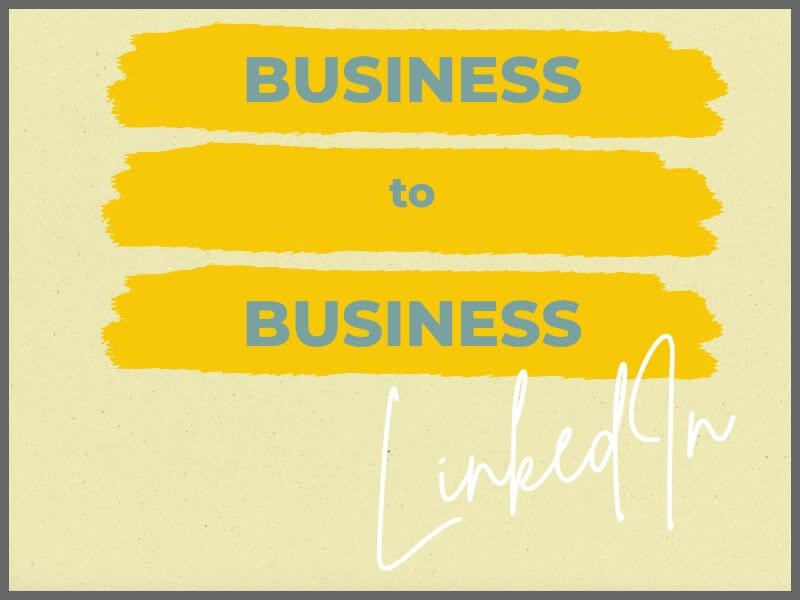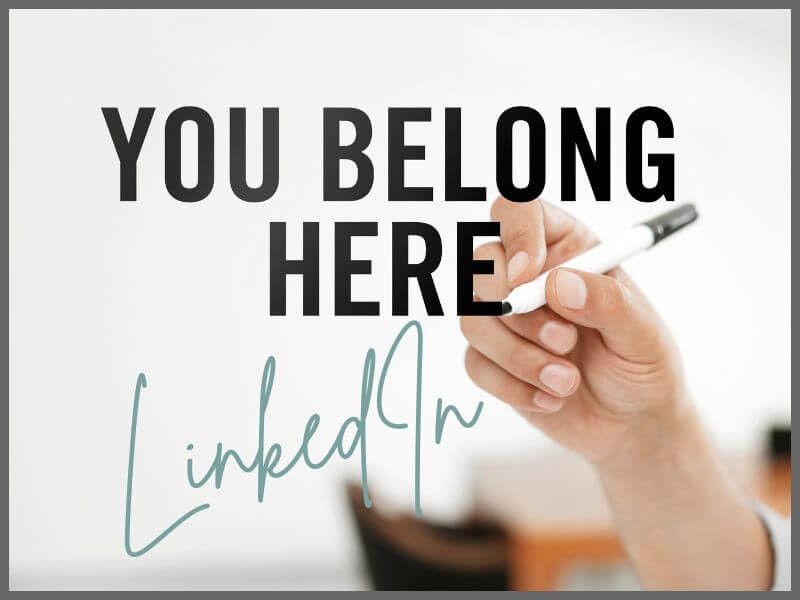
Many companies have a LinkedIn profile, but very few actually get any real benefit from it. Common issues we hear are: “We don’t know what to post,” “No one is reaching out to us,” “We have profiles, but nothing is happening.” And that’s totally fine – LinkedIn works differently than other social networks.
If you want LinkedIn and B2B (business-to-business) marketing that bring real results, you need a clear plan.
B2B marketing means you want to attract other businesses as clients – unlike B2C, where you target end consumers. That’s why your strategy on LinkedIn needs to be adjusted.
Because a company, as your ideal client, is not like individual consumers, but someone responsible for business and decision-making. And where is that someone? Probably on LinkedIn.

Unlike Instagram and Facebook, where people usually seek entertainment, inspiration, or an escape from work – LinkedIn is a place where users are there “for work.”
Here’s what that means in practice:
People are more open to business conversations.
If you send someone a message with a collaboration proposal, you’ll likely get a concrete response the same day. On other networks, such a message might seem odd or pushy – here it’s a normal part of communication.
You reach decision-makers faster.
On LinkedIn, you can see who’s the CEO, who’s in charge of procurement, who’s handling marketing. You don’t waste time sending emails to info@company.com, because those often end up in spam or in no one’s inbox and you won’t get a reply.
Posts last longer and are more likely to be read.
On Facebook, a post disappears... On LinkedIn, your post can show up multiple times, especially if people engage with it (comment, like, share).
If, for example:
…then LinkedIn isn’t just another social media platform, but a serious sales channel.
Tip to get started:
Before you start posting or running ads, review the profiles of your ideal clients – what do they post and share, what do they talk about, and what are their problems?
Write down 3–4 topics that could be useful to them – and build your content around that.
And LinkedIn rewards consistency, authenticity, and useful information. You don’t need thousands of followers or a viral post here – it’s enough for the right person to see you at the right time.
Behind every profile is a real person with real business challenges. If you can help them – LinkedIn is the right place to show it.

On social media, including this one, people check your profile first. If it looks unprofessional or like you created it 20 years ago and forgot about it, you're not leaving the best impression.
Important elements of a LinkedIn profile:

LinkedIn demands consistency that makes sense. In other words, it requires routine, whether you like it or not.
What to post? Educational content, client experiences, opinions on industry trends.
How often? Ideally 2–3 times a week – but even once a week is better than nothing.
Who are you talking to? Define your target audience by role, industry, and company size.
You don’t need to be an “influencer” to be successful on LinkedIn. You just need to post regularly, be yourself, and be useful to people.
Here’s what works well for B2B networking:
Don’t worry about making your post perfect. People prefer honest, human posts over marketing monologues.
You don’t need to know everything. You just need to start.
Like all other social media ads, LinkedIn ads come with a cost – but also a clear purpose.
If you’re targeting other companies as your clients, LinkedIn gives you tools that other networks don’t. But for advertising to make sense, it’s important to know who you want to attract and what exactly you’re offering them.
LinkedIn allows you to target by:
Most commonly recommended ad types for B2B networking:
And when is the right time to advertise? If you already know:
…then the ad is a great addition to your regular posts.
Tips that help when creating ads:
Behind the companies you want to connect with on LinkedIn are real people.
On LinkedIn, just like anywhere else, clients won’t fall from the sky. On this platform, it’s necessary to gradually build your network, without forcing it.
How to do that?
Consistency and trust are built over time.
Post at least once a week. Comment. Engage. Be present.
People will remember you as “the person who always shares useful tips” or “the one who consistently gives great sales advice.”

You don’t need paid tools, viral posts, or a perfect plan to attract serious clients via LinkedIn.
It’s enough to regularly share useful content, connect with people from your industry, and be a real person with a clear offer.
If you don’t know what to post – write what you often say to clients. That usually works best.
If you’ve been thinking about LinkedIn, even about ads, but aren’t sure how to start, Zona plus digital marketing agency can help you create a campaign that generates inquiries.

Absolutely – especially for small businesses. If you offer something that helps another company work better, faster, or more affordably – LinkedIn gives you a chance to present yourself professionally and attract clients.
Example: an accounting service targeting IT startups or a marketing agency that wants to work with hotels in Dalmatia – LinkedIn is the ideal channel for such niche offers.
On average, it takes 3 to 6 months of consistent activity – posts, comments, networking, messages. Because on LinkedIn you’re doing “digital networking.”
The first results are often not inquiries but something even more important – visibility, trust, and connections. And then actual collaborations follow.
Yes – and not as “influencers,” but as the people behind the company.
If the CEO, sales managers, and others have optimized profiles and occasionally post something related to work – the company gains credibility.
Tip: agree on a strategy within the team – for example, each person posts something once a month.
No. Many companies have received serious inquiries through regular posts and networking alone.
Ads can help, but only after you know what works organically. That’s why it’s smart to first test topics and communication style – and only then invest in ads.
Initial goal: 1 post per week. If you have more ideas, great – but it’s better to be consistent with fewer posts than to post 5 times in 2 days and disappear for a month.
Comment on other people’s posts (especially from your industry) – it’s a quick and effective way to increase visibility.
People love useful tips, real stories, and concrete solutions.
Write down what you explain to clients most often – those are perfect topics.
Examples:
Yes – especially if you’re targeting specific industries, roles, or regions. LinkedIn allows you to target exactly those people – either through posts or ads.
You can, but moderately.
AI can help with ideas, structure, and suggestions – but your voice, experience, and examples matter most.
LinkedIn works better when posts sound like a person, not a machine.